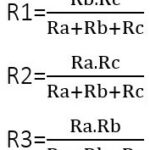The speed of 5G networks, both in the uplink and downlink directions, varies based on several factors, including the frequency band used, network deployment, and the presence of advanced technologies. 5G is designed to deliver significantly higher data rates compared to previous generations, enabling faster and more responsive connectivity. Let’s explore the speed of 5G in both the uplink and downlink directions:
- Downlink Speed:
- 5G promises much higher downlink speeds compared to 4G LTE. The downlink speed can vary based on the frequency band utilized, with different bands offering different levels of performance.
- In low-band frequencies (sub-1 GHz), 5G downlink speeds can range from 30 Mbps to several hundred Mbps. While this provides better coverage, the data rates may not be as high as in higher frequency bands.
- In mid-band frequencies (1-6 GHz), such as the C-Band (3.5 GHz), downlink speeds can exceed 1 Gbps. This mid-band offers a balance between coverage and data rates, making it suitable for urban and suburban deployments.
- In high-band or millimeter-wave frequencies (above 24 GHz), 5G downlink speeds can reach multiple Gbps. While millimeter-wave provides extremely high data rates, its coverage is limited, and the signals can be easily obstructed by obstacles.
- Uplink Speed:
- 5G also delivers significantly improved uplink speeds compared to 4G LTE. Uplink speeds are crucial for applications such as video conferencing, online gaming, and uploading large files.
- In low-band frequencies, uplink speeds in 5G can range from 10 Mbps to several hundred Mbps. While not as high as downlink speeds, they still represent a notable improvement over 4G.
- In mid-band frequencies, uplink speeds can exceed 100 Mbps, offering a good balance between coverage and uplink data rates.
- In millimeter-wave frequencies, uplink speeds in 5G can also reach multiple Gbps, providing extremely high-speed connectivity for applications that require fast data uploads.
- Advanced Technologies Influencing Speed:
- Carrier aggregation: 5G networks can aggregate multiple carriers, allowing for higher data rates by utilizing wider frequency bands.
- Massive MIMO (Multiple Input Multiple Output): Massive MIMO technology enhances spectral efficiency and capacity by using a large number of antennas for simultaneous data transmission and reception.
- Beamforming: Beamforming enables the network to focus signals in specific directions, improving signal quality, coverage, and data rates.
- Dynamic Spectrum Sharing (DSS): DSS allows the simultaneous use of 4G and 5G in the same frequency band, optimizing spectrum utilization and enhancing overall network efficiency.
- Real-World Performance:
- Real-world 5G speeds can vary based on network congestion, user density, and the deployment of advanced technologies by the network operator.
- Peak speeds are often achieved in optimal conditions, and actual speeds experienced by users may be lower but still significantly faster than those in 4G networks.
- Evolution of Speeds:
- As 5G networks continue to evolve, with the introduction of technologies like standalone (SA) architecture and network slicing, there is potential for further improvements in both uplink and downlink speeds.
In summary, the speed of 5G in both the uplink and downlink directions is significantly higher than that of previous generations, providing enhanced connectivity for a wide range of applications. The actual speeds experienced by users depend on various factors, and ongoing advancements in technology are expected to further elevate the performance of 5G networks.
